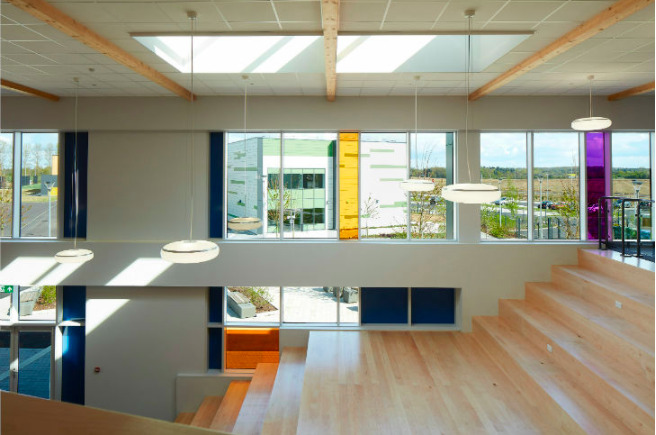Academic Achievement and Daylight
The Capistrano School Unified District in Orange County, California, had different building plans to bring in natural light. The Capistrano School Unified District serves a population of more than 40,000 students in 44 schools from kindergarten through high school. It provided the authors with data on 27 elementary schools, of which nine included skylights in their classrooms and 13,913 students were involved to conduct this study. In this study, the authors grouped the types of classrooms and compared the reading and math test scores of students in each group. The four different groups made: one group into a classroom with operable windows, another group had a classroom without windows, and the others are two different types of skylights. The experiment was also conducted by comparing the reading and math scores of students in each group. Overall, the classrooms with the most amount of daylighting had a 20% faster learning rate in math and a 26% faster learning rate in reading during one school year when compared to classrooms with the least amount of daylighting (Heschong, Wright, & Okura, 2002). These results can also be analyzed by looking at the average child learning rate of Capistrano district. Heschong et al. (2002) said that schools will save up to a month of education time on reading and math courses for students using effective daylight. The results of the experiment were also that variables in daylight, not the number of windows or presence of windows, had a greater impact on students' ability to learn. Therefore, when analyzing students' ability to learn, it can be seen that it should identify the presence of daylight rather than the presence of windows.
The Heschong et al. (1999) showed that students in California improved their academic performance in 1999. For the study, year-end final test scores of second- and fifth-grade students in Orange County, California, Seattle, Washington, and Fort Collins, Colorado were tested. In California schools, data was collected for a year to assess the learning rate. The study found that the Seattle Public School District in Seattle, Washington, had a 9 percent lower math score for students in the classroom with the fewest daylight. Also, students in the classroom who had the most daylight had 13 percent higher reading scores than other students. In Fort Collins, Colorado, students who studied in a classroom with enough sunlight scored 7 percent more in reading and math than those with the lowest daylight levels. The difference in scores in each region may be due to differences in daylight exposure at different locations. Also, children in Seattle and Fort Collins, compared to California, could see greater effects from daylight because they see less sun in geographical locations.
In the previous article (Gilavand, Gilavand, & Gilavand, 2016), the researchers assume that physical school space is the most necessary element of students' various educational activities and conducted an experiment to examine the effects of daylight on learning and academic performance of elementary school students. A total of 210 students in Ahvaz, Iran, were selected as samples for the study. The researchers collected data by randomly distributing questionnaires among students and that cluster sampling was done by appropriate allocation. The content of the questionnaire consisted of a checklist to investigate the parameters of daylight in the learning environment and students were interviewed after the survey. This study shows that daylight is a very necessary element for students to achieve their academic abilities, and it is an important factor to students to receive natural light when designing an educational space. The study says light, temperature, air quality and color affect classroom space. While various factors affect students' academic performance, the impact on learning progress in an environment which has the quality of daylight is significant.



